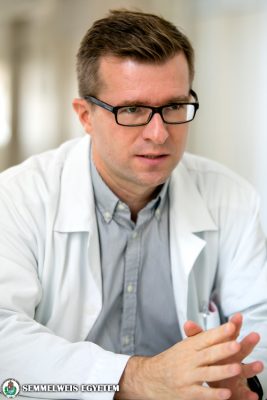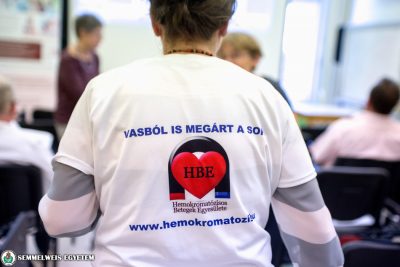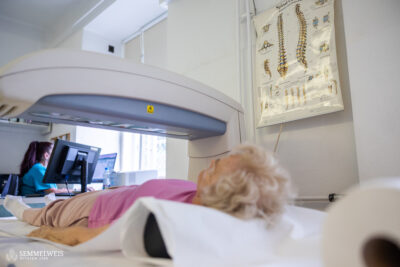 Currently around 200 thousand women are suffering from endometriosis in Hungary. According to a previous study, carried out with eight European and two American endometriosis centres including the Department of Obstetrics and Gynaecology at Semmelweis University, it takes an average of 9 years in the USA, 7 years in Germany and the UK, and 3.9 years in Hungary to diagnose the disease. “One of the aims of the new professional recommendations is to shorten this time,” said Dr. Attila Bokor, Associate Professor at the Department of Obstetrics and Gynaecology, Semmelweis University, member of the expert team that developed the new European recommendations.
Currently around 200 thousand women are suffering from endometriosis in Hungary. According to a previous study, carried out with eight European and two American endometriosis centres including the Department of Obstetrics and Gynaecology at Semmelweis University, it takes an average of 9 years in the USA, 7 years in Germany and the UK, and 3.9 years in Hungary to diagnose the disease. “One of the aims of the new professional recommendations is to shorten this time,” said Dr. Attila Bokor, Associate Professor at the Department of Obstetrics and Gynaecology, Semmelweis University, member of the expert team that developed the new European recommendations.
One of the most important points of the new guideline for patient care published by the European Society of Human Reproduction and Embryology (ESHRE) in early February is that previously, endometriosis could only be diagnosed properly by surgery. However, the rapid development of ultrasound diagnostics now allows modern vaginal ultrasound to provide reliable results in certain cases, for clinical diagnosis,” said Dr. Attila Bokor, adding that a final diagnosis still requires laparoscopic surgery. A new class of drugs can help to improve patients’ quality of life: the so-called GNRH antagonists have recently been registered for the treatment of endometriosis and have shown encouraging results so far.
Endometriosis is often the cause of infertility. That is why the new recommendation includes the possibility of freezing egg and ovarian tissue before surgery, for women who would be less likely to become pregnant as a result of the operation.
Currently, this is only available in the Department of Obstetrics and Gynaecology for women with cancer, where work is underway to make this possible for patients with endometriosis in cases where it is professionally justified.
The guideline includes a new chapter on endometriosis in menopause, as the theory that endometriosis cannot develop after menopause has been overturned. The recommendation also addresses the involvement of adolescent girls with endometriosis. In this area, professionals expect a solution primarily from the introduction of new drug treatment options.
Dr. Attila Bokor emphasized that the new guideline provides a reference throughout Europe for the diagnosis and treatment of endometriosis, however its introduction is not mandatory; it is up to each member state to adopt and implement it as a whole or in part. The development of the Hungarian recommendation is currently underway, which is carried out by Dr. Attila Bokor at the request of the professional college.
The first guideline on endometriosis was developed in 2008, then the next one in 2014 by the European organisation. The new recommendation is the result of around 100 expert meetings and 4,000 scientific publications reviewed over three years. Dr. Attila Bokor represented Hungary in the group that drafted the recommendations.
Orsolya Dávid, Pálma Dobozi
Translation: Viktória Kiss
Photo: Attila Kovács – Semmelweis University
Photo illustration: envatoelements


